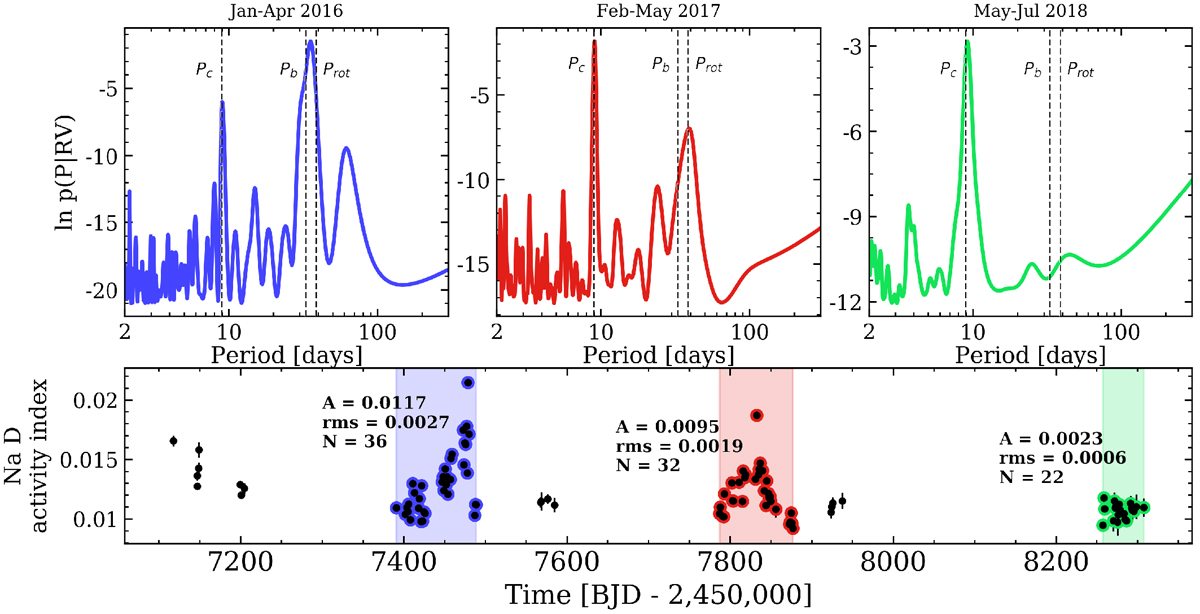Fig. 5

Top row: Bayesian generalized Lomb–Scargle periodograms of the HARPS RVs in the three observing seasons annotated above each panel. The vertical dashed lines depict the orbital period of the proposed non-transiting planet K2-18c (Pc = 8.962 days), the orbital period of the known transiting planet K2-18b (Pb = 32.93963 days), and the photometric stellar rotation period (Prot = 38.6 days). Bottom row: sodium doublet time-series as measured by HARPS. The coloured regions/markers are indicative of the epochs used to compute each RV GLSP in theupper row. The annotation group adjacent to each observing season depicts the Na D peak-to-peak amplitude A, the NaD rms, and the number of measurements within that observing season. These A and rms diagnostics indicate that the level of stellar activity is decreasing with time, while the Pc signal is simultaneously becoming more prominent.
Current usage metrics show cumulative count of Article Views (full-text article views including HTML views, PDF and ePub downloads, according to the available data) and Abstracts Views on Vision4Press platform.
Data correspond to usage on the plateform after 2015. The current usage metrics is available 48-96 hours after online publication and is updated daily on week days.
Initial download of the metrics may take a while.


